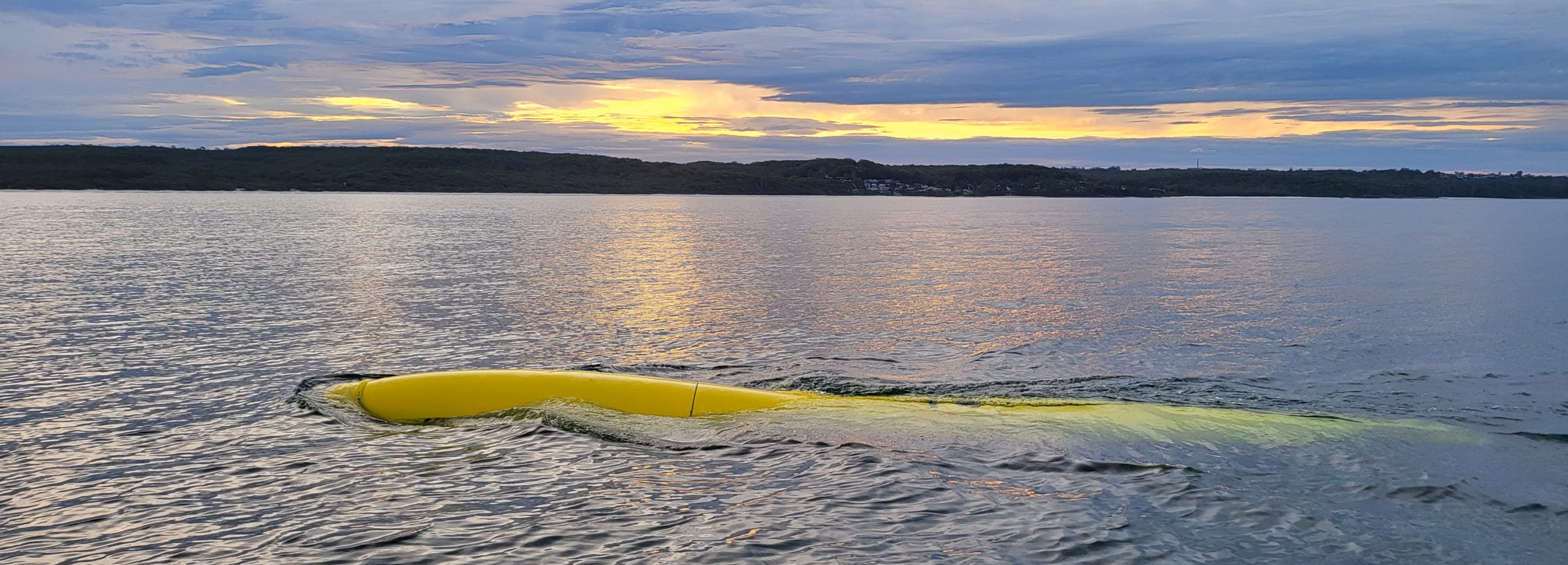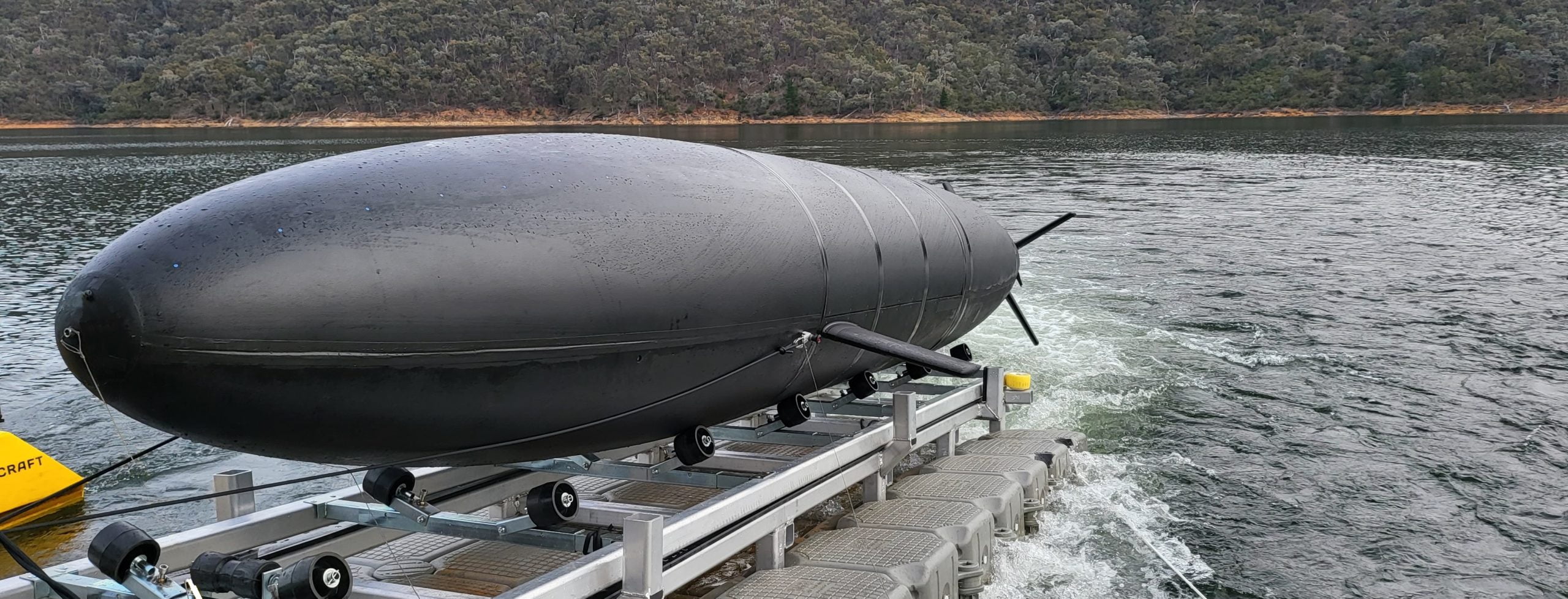By Robbin Laird
During my current visit to Australia in support of the 27 September 2023 Willliams Foundation seminar, I have taken the opportunity to continue my discussions on the coming of maritime autonomous systems to the Australian forces.
First, I was able to talk with CDRE Darron Kavanagh, Director General Warfare Innovation, Royal Australian Navy Headquarters, about how to accelerate the effort to introduce maritime autonomous systems within the force.
Next, I spoke with Robert Dane about the progress with regard to one of those Australian systems, namely the Bluebottle USV. There I learned of the progress in the Australian use of his very interesting capability to fill the gap between a crewed ship and nothing as their video higlights.
And I talked with C2 Robotics about their work on building undersea capabilities which provide significant capabilities for a Royal Australian Navy undersea force in profound transition. Part of the answer to how the RAN will manage their submarine transition clearly needs to rely on the kind of capabilities being developed and built by C2 Robotics, located in Melbourne Australia.
At the recent Williams Foundation seminar on multi-domain strike, RADM Stephen Hughes, Head of Navy Capability, highlighted this possibility in his remarks. He noted that “to attain long range strike capabilities allows us to move from a strategy of defense to a strategy of deterrence through denial signifies a national shift that aims to hold an adversary at risk at greater range.”
For Australia to do this in maritime domain relies on their air and sea capability from their manned platforms, supplemented by a build out of maritime ISR-T enterprise capability seen in the capabilities being built at the Edinburgh airbase and in the air with the P-8/Triton combination in the current period and into the next few years.
But coming in that period and hopefully seeing significant growth in its contribution will be the new generation of uncrewed maritime systems. RADM Hughes noted: “Maritime strike operations are not limited to ship launched long range fires, or air launched long range fires, but include mines, autonomous systems, electronic attack, and any other lethal effect launched from or conducted in the maritime domain.”

With regard to the maritime autonomous systems part, RADM Hughes underscored: “Navy is working with industry is exploring solutions through the Autonomous Warrior series of experimental exercises. Programs, such C2 Robotics Speartooth and the Anduril Ghost Shark will have the ability to strike deep against an adversary and able to deploy mines and other guided weapons by sovereign Australian capabilities.”
The Speartooth LUUV is described on the C2Robotics website as follows: “Speartooth is a Large Uncrewed Underwater Vehicle (LUUV) designed for long range, long duration undersea operations. It brings a combination of highly advanced capabilities together with a modular, rapidly reconfigurable design specifically focused on manufacturing scalability and a revolutionary cost point that enables high volume production and deployment.”
Obviously, such a program is shrouded in significant performance and mission secrecy as behooves the domain of undersea warfare, but the company highlights the following features of the craft: large flexible payload bays, common command and control, direct propeller propulsion and variable buoyancy propulsion.
I had a chance to talk with Thomas Loveard, a founder and CTO of the company, and with my colleague Marcus Hellyer, who is a strategic advisor to the company. According to the website: “Tom Loveard holds a PhD in Artificial Intelligence and Machine Learning. In 2003 he co-founded Sentient Vision Systems, where he led the development of autonomous detection solutions including the award-winning MTI and ViDAR systems. He joined AVTA in 2016 as the CTO, where he championed the development of the world’s best micro gimbal and cutting-edge targeting gimbal systems.”
I hope to visit their facilities in Melbourne on my next visit to Australia but was glad to have the opportunity to begin my discussions with them about their approach and their core platform.
As I have made very clear in my writing about maritime autonomous systems, these are very different from crewed platforms, and are best understood as complements to the crewed force. And they provide important capabilities, to use the Ocius terminology, between crewed assets and nothing. And really until the operational forces begin incorporating maritime autonomous systems within their kill web concepts of operations, we will not see the kind of effect they can have for a smaller navy like the RAN.
But it will be significant indeed. The Australian government is doing a surface fleet review and frankly if this is not done with an eye to the operational mix of crewed and uncrewed systems, they need to go back to the drawing board. Moreover, with the pressure on the Department of Defence’s acquisition budget, any near-term additions to the shopping list will most likely need to be small, affordable systems rather than major platforms.
Loveard pointed out that the company is focused on undersea systems in the autonomous domain and building at a price point where we can buy and deploy many of them. I would note that one key difference when discussing maritime autonomous systems is to understand that they are not designed like crewed platforms in terms of being part of a relatively small build of platforms, but are designed to be built and operate in numbers.
Loveard also underscores that the company was working on the navigation and targeting capabilities of their systems in terms of not having to use more traditional methods using GPS or using radio frequencies as well.
One of the key aspects of maritime autonomous systems is to understand them in terms of the payload revolution which is re-shaping operational forces. What payloads can you project to the relevant operational area rather than which platforms do you send is a key consideration of what I have referred to as the kill web operating force,
And the Speartooth is clearly built around the payload revolution. Indeed, if one looks at traditional naval platforms the % of payload to the operating area is around 30%. After all, you have to provide for and protect the crew. It is very different with maritime autonomous systems where the priority is upon your ability to deliver the relevant payload to the operational area. This means that % wise, the payloads are a much more significant part of the weapon system.
Hellyer added the important point that Speartooth is designed to be a long-range system. This means that it can deploy from various points on Australian territory to provide capability for the ADF. The ability to leverage Australian geography is a key point in shaping the way ahead for Australian defence, and being able to do so without using traditional bases is a key element to be able to do so. Hellyer also noted that Speartooth can be launched from virtually any boat ramp, freeing it from major infrastructure requirements, or even a ‘mother ship’.
Loveard underscored with regard to the payload flexibility of the system that is a completely open architecture system. “We want our system to be rapidly adaptable to new payloads or evolving payloads and to be able to translate that into immediate capabilities rather than to take years of work adapting the platform to new technological realities.”
I emphasized during the 27 September seminar write up, the growing importance of counter-ISR. Clearly, payloads can be developed to allow something like the Speartooth to be a part of counter-ISR operations, as well as ISR and kinetic payloads as well. Moreover, the fact that potentially thousands of Speartooth vessels can ‘hide in plain sight’ to use C2 Robotic’s term, i.e., be stored in shipping containers in commercial facilities and be launched from thousands of locations, immensely complicates an adversary’s ISR problem.
But to get to that future, the force needs to being to employ such capabilities and use these new assets. For only then will they evolve and develop. For unlike crewed platforms, these platforms are built around software which is driven in its development by domain knowledge shaped by operational use and continuous feedback from users. If they are thought of as traditional defence science projects, they will just remain that.
The featured photo: The second prototype being launched from an early version of the Speartooth launch system.


